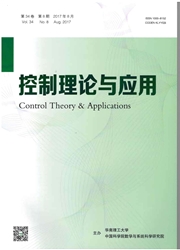

 中文摘要:
中文摘要:
电液制动系统(electro-hydraulic brake system,EHB)作为未来制动系统发展的重要方向,已受到广泛关注.本文基于一套自主设计的集成式电液制动系统(integrated electro-hydraulic brake system,I–EHB)系统进行研究,为确保其压力控制动态响应及精度,克服工作中存在的延迟及能量损失,设计了两种液压力控制方法,分别是基于田口方法优化的自适应PID控制和基于滑模变结构的补偿控制,并搭建台架对两种控制方法进行测试.通过对两种控制方法下系统响应的比较分析,发现滑模变结构补偿控制效果较好,系统响应快、稳态误差小、鲁棒性好,尤其在系统常用的低频及中高压阶段控制表现突出,验证了该方法的正确性和有效性,并为进一步探索提出了方向.
 英文摘要:
英文摘要:
The electro-hydraulic brake system (EHB) has become an increasingly promising research area. In this paper, the pressure control method of a self-designed I--EHB (integrated electro-hydraulic brake) system were researched to ensure the dynamic response of the system, and to balance the delay and loss of energy during work. Therefore, two hydraulic pressure control methods, the optimized self-adaptive PID control based on the Taguchi method and the sliding mode variable structure control (SMVSC), were designed and experimented on test bench. The paper compared these two different control methods and the experiments revealed that the EHB system with SMVSC has shorter time delay, smaller steady state error and better robustness with respect to integral controllability, especially when the target output is low frequency average-high hydraulic pressure, which occurs mostly under normal working condition. Therefore, this paper showed the effectiveness of the SMVSC and guides the further investigation of the hydraulic pressure control method.
 同期刊论文项目
同期刊论文项目
 同项目期刊论文
同项目期刊论文
 期刊信息
期刊信息
